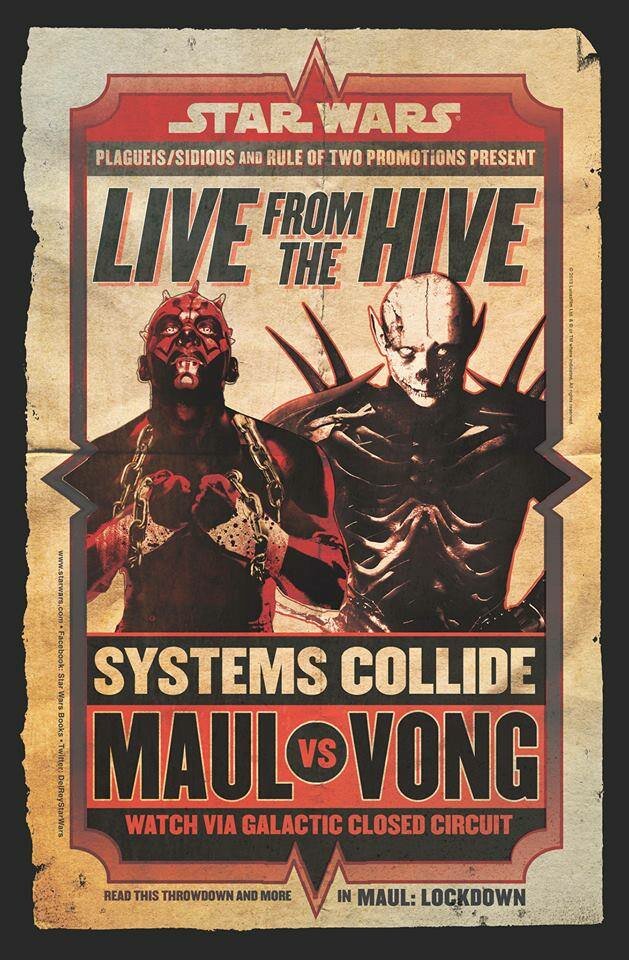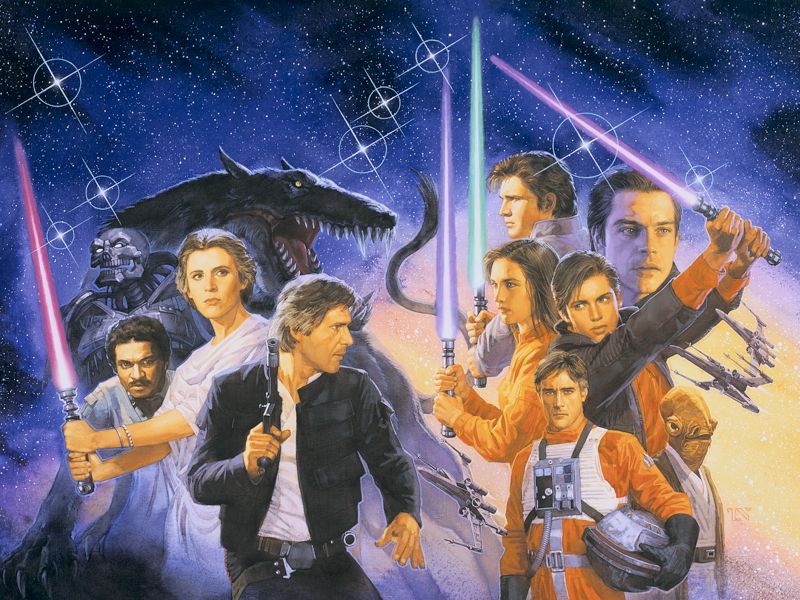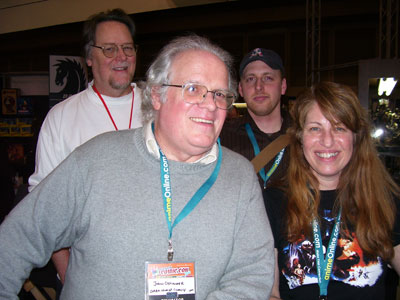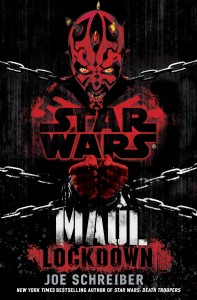 In last week’s new release Maul: Lockdown, Darth Maul is sent to uncover a reclusive and mysterious arms dealer hiding out in Cog Hive Seven, a space-based prison whose architecture is infinitely rearrangeable. This has two benefits: one, escape is much more complicated when the route out of your cell is constantly changing, and two, it allows Warden Sadiki Blirr to pick any two inmates and smack them together like action figures. The resulting deathmatches are then broadcast to the galaxy for gambling purposes, with Blirr herself collecting a healthy piece of the profits. This system of near-constant combat makes up the spine of Lockdown‘s bloody proceedings, and while the Rubix-Cube-like concept of Cog Hive Seven is a novel approach, the general premise of gladiatorial combat has a long and storied history in the Galaxy Far, Far Away, dating almost all the way to the beginning of the Expanded Universe.
In last week’s new release Maul: Lockdown, Darth Maul is sent to uncover a reclusive and mysterious arms dealer hiding out in Cog Hive Seven, a space-based prison whose architecture is infinitely rearrangeable. This has two benefits: one, escape is much more complicated when the route out of your cell is constantly changing, and two, it allows Warden Sadiki Blirr to pick any two inmates and smack them together like action figures. The resulting deathmatches are then broadcast to the galaxy for gambling purposes, with Blirr herself collecting a healthy piece of the profits. This system of near-constant combat makes up the spine of Lockdown‘s bloody proceedings, and while the Rubix-Cube-like concept of Cog Hive Seven is a novel approach, the general premise of gladiatorial combat has a long and storied history in the Galaxy Far, Far Away, dating almost all the way to the beginning of the Expanded Universe.
My comrade Lucas Jackson touched on gladiators briefly back in Star Wars and Genre: The Sports Story, and he may well return to the subject one day, so I won’t get too into the details here; what I’m more interested in is what the many instances of coercive life-or-death combat suggest about the Star Wars setting as a whole.
Read More




